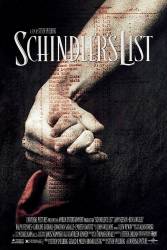Factual error: When the camera took a shot on a train coming to a station in Czechoslovakia, you can see electric cables above the train tracks. There was no such thing in Czechoslovakia as electrified trains in the 1940's. The electrification started in the 1950's. (00:01:05)
Factual error: In the beginning, when the Germans are setting up the tables to record the names, one German puts down a plastic stamp pad. Stamp pads of that era were metal.
Suggested correction: Not true. Rubber stamp pads were invented in 1866. By WW2 they were easily available.
I do not believe the mistake refers to the stamp itself or the ink pad, but to the container holding the ink pad. The stamp is made of rubber, but the ink pad should be contained in metal.
Personally I think it is a metal stamp pad. Maybe a second pair of eyes to confirm? At 1:31 https://www.youtube.com/watch?v=9UoF6uIQOK8.
It could have easily been celluloid or Bakelite - both had been around for decades.
Factual error: In the opening scenes at the nightclub when Oscar is treating his new friends to dinner, they are singing "The Happy Wanderer" ("Der Fröhliche Wanderer"), which then cuts to marching German troops singing the same song. This song was written by Friedrich-Wilhelm Moller shortly after WWII. The nightclub scene was supposed to have taken place in 1939. (00:09:10 - 00:10:10)
Factual error: When the train containing the women leaves Krakow-Plaszow and is mistakenly rerouted to Auschwitz (roughly 25 miles west of Krakow), the train is shown passing a mountain range. There are no mountains between Krakow and Auschwitz/Oswiecim.
Factual error: During the liquidation of the ghetto, many German soldiers shout and beat the Jews out of their homes but one of the soldiers salutes a little child saying "Wie heisst du?" (What's your name/what are you called?). However the subtitles from the Deluxe Edition DVD read "hiesst" instead of "heisst" (which is not even the preterit/past form, which would be hieß/hiess). (00:59:45)
Factual error: When Goeth goes back in from shooting two prisoners, he goes to the bathroom and you can hear him unzipping his pants. German uniforms did not have zippers, they had buttons.
Factual error: There is a scene in which blues singer Billie Holiday is heard singing (presumably on the radio) her song, "God Bless the Child." Holiday did indeed first record this song in 1941, but the version heard in the film is from much later, after the war, in the 1950s (It is believed to be a version which was recorded for the Verve label). The version which should have been heard in the film was recorded in 1941 for the Okeh label, and is now part of the Columbia Records catalog.
Factual error: When Amon Goeth attempts to execute the Jewish factory worker for failing to produce enough hinges, Goeth cycles the actions of both inoperative weapons several times. At no time is an unfired round ejected from either handgun, which should have occurred, unless the unfired rounds were both jammed in the chamber (and the firing mechanisms had failed).
Factual error: After the introduction in 1939, when the German soldiers are marching and singing, you see a soldier carrying an MG42 on his shoulders (not to be confused with the MG34, also onscreen). The MG42 was introduced into the German Wehrmacht in 1942. (00:10:26)
Factual error: Steven Spielberg didn't get permission to shoot the train arrival at the real Auschwitz. So he build the main entrance, but seen from the front side. The gate, left from the main gate proves that. So when the train 'enters' at Auschwitz, it in fact is departing Auschwitz, instead of arriving. Eleven minutes later, it's just the other way around. When the train departs, it's actually 'arriving'. (02:31:35)





